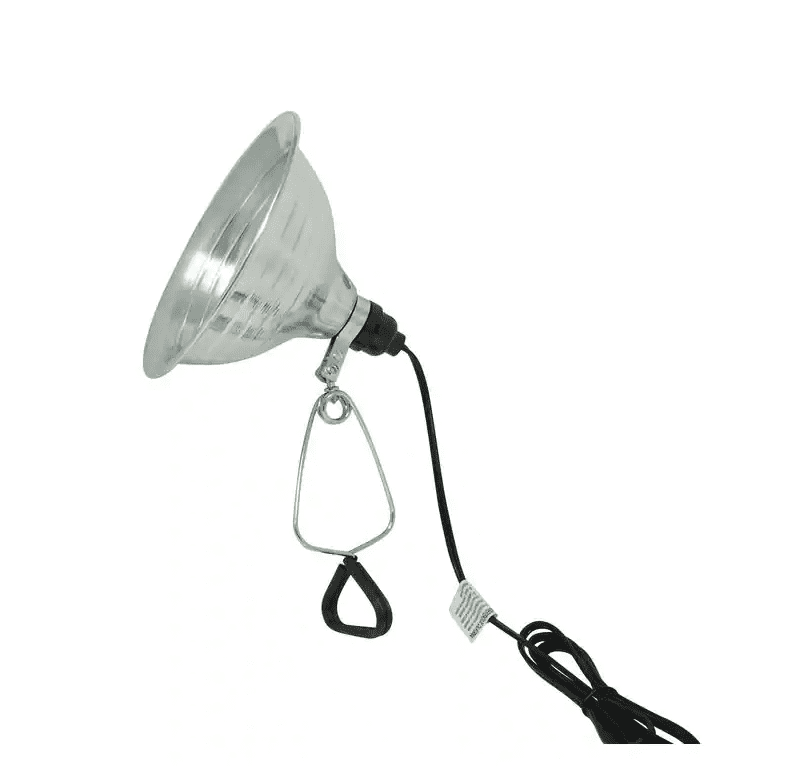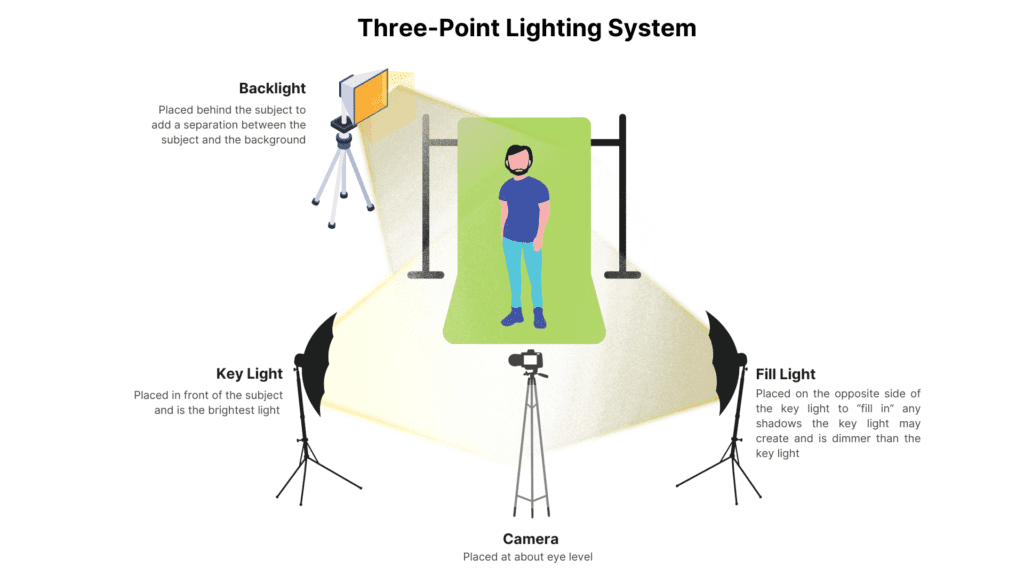Great lighting is the key to creating high-quality video content. If you want to create interesting videos, video podcasts, live streams, or even short social media content, you need to take fire seriously.
You can spend thousands on professional lighting, but you should not. If you follow the basic principles of fire control, you can produce amazing results with simple materials from your home or local hardware store. This is important for anyone starting a podcast who doesn’t want to invest a lot of money.
In this article, we explain how to build your own DIY video light. If you follow this advice, your video will be super bright for less than $150.
What is a DIY Video Lighter?
Lighting is a small collection of lighting tools that are great for creating video content. In most cases, this involves three or four sets of lights. The lights are placed in order to get the best light.
What is included in the normal electricity supply?
- Head Light: A bright light source that shines directly on the subject
- Wet light: A small, weak light directed in your face.
- Backlight: Another small light that shines on the back.
- Light reflection: reflective surfaces diffuse light to soften shadows.
- Holding tools: Various tools make everything stable, such as power adapters, A-clamps, C-stands, extension cords, sandbags or gaff tape.
- Light switch: black plastic prevents unwanted light, change your light, or control the light spill.
It looks like a lot of apps, doesn’t it? Don’t worry. Although professional lighting can set you back thousands of dollars, you can create the same effect with things you have around the house or those picked up from the store. your local hardware.
List of DIY lighting equipment
Before setting up your DIY lighting, you’ll need to pick up a few things. All of these items can be purchased at Home Depot, Lowes, Ace Hardware, or other hardware stores. You can also grab some items at Walmart.
- Black trash bag
- masking tape, painter’s tape, or gaffer’s tape
- The shower curtain is clean
- Fireworks (get at least three)
- Dimmer switch (one for each light)
- High power LED lights that match your folding lights
- Water lock
- Extension cord
- Pack of clothespins
- Power adapter (3)

Power adapters are the only things you won’t find in a hardware store. Technology you can build your own from hardware and hardware stores, but this can be more expensive than just buying a few cheap options on Amazon. This is a cheap option, as well as this and this.
Keep in mind that these tips are for your first lighting setup. As your podcast, YouTube channel, or social media audience grows, you’ll eventually get a tier of professional resources. The right tools will always produce the best results, give you more control, and last longer.
Setting up your DIY video generator
Now that you have everything you need, let us walk you through the process of creating your own video light.
Step 1: Block unwanted light from the trash can
Your first step is to block ambient light from windows or neighboring buildings. In fact, it’s best to start with a completely dark recording space if you can.
Use black plastic bags to cover your windows and any unavoidable sources of heat. Depending on the size of your window, you may need to tear down each case. Apply it to your window from side to side, blocking all the light. You can use multiple levels if you have multiple lights coming up.
Don’t throw your trash away when you’re done! They can be used repeatedly.
Step 2: Heat your lock over your power source
Use the small clip on the bottom of your light pack to attach the light to the adapter. These clips can work, they’re not very strong, so you can use one of the water cans for extra support.
Do not connect your flashlight to the outlet in any permanent way. You need the ability to change their direction in the future. You can also stock up on all the DIY video lighting accessories.
Step 3: Create a custom diffuser from a shower curtain
Professional lighting places a diffuser in front of the bulb to spread the light. This gives light to a wide area, and makes the light soft in small directions. You can use a shower curtain to diffuse the light from your ceiling light.
Cut the shower curtain into two 12 inch pieces. Use a cloth to put a hole in front of your two lights. This will spread the light as it flatters your face.
Leave the third light uncovered. This is your backyard.
Step 4: Add a dimmer switch to your light
If your lights are still bright (and they will be if you use 100W bulbs), you should use dimmers. Using dimmers gives you the ability to control the light in the environment, which is helpful if you have to overcome the environment or difficult to light. (Yes, even some people are more difficult to burn than others!)
First, check that you have purchased a fire extinguisher. If they can’t go out, they will flicker as soon as you turn the dimmer. Check out bulb pack, not the light itself. Some bulbs will vibrate almost imperceptibly, but you can see it in the video recording.
Next, turn each light on its own dimmer. Turn them on and use the dial on the dimmer to reduce the brightness until you like the light.
You now have two key lights. If you want one of the lights to be a flood light, just turn it on with a dimmer. (More on this in a moment.)
Step 5: Position your lights, camera, and subject properly
Your last step is to place all your equipment in the right place for the best lighting. Your goal is to eliminate shadows and put a soft, flat light in front of your subject.
Unless you’re going for something artistic, you’ll want to use a three-point lighting system. This setting is a great way to reduce shadows, create angles, and make your videos look professional. It helps if you use a green background because it creates a separation between the subject and the background.
For three lights, you’ll need a key light, a fill light, and a backlight. In some cases, you may find that it helps to have more light (with a piece of shower curtain for diffusion) placed behind you.
Stream Yard (a live streaming and recording specialist that runs in your browser) has a great guide to three lighting systems. This is what it looks like when it is configured:

Your key light is your first light. This light is placed in front of the subject and slightly to one side (and usually in the front). It should be the main light in your arrangement.
The fill light is also slightly to the side, but opposite the key light. The purpose of fill light is to eliminate any shadows created by the main light. This light should be 50-75% dimmer than the key light and placed to the side to bring out details on the other side of the subject.
The backlight sits behind the subject. Its purpose is to separate the subject from the background to give the room a good space. Place it on the same side and side as the key light, but higher than the other lights.
Tips for fire safety
Finding the right light takes a little trial and error. How you design your lighting will vary depending on your subject and setting. Here are some tips that will help you achieve good lighting.
- The best place to set up a lighting system is a room with white walls or a plain background. Complicated patterns and dangerous parts are difficult to burn.
- Choose a place that offers enough space to set all your settings. If your equipment is too close, it will create shadows that are difficult to remove.
- Your key light and light intensity should be about three feet from the subject.
- Adjust your lighting until you are happy with the results. You don’t have to follow any rules or best practices. Create the right lighting for your video.
- If you want to remove your lights from the recording area, consider putting tape on the floor to mark the position of your plug.
- Pay attention to the production of heat from the fire. Depending on the type of light and/or lamp you have, they can produce a lot of light.
- Make sure none of your equipment can be seen in the camera frame.
What’s in your DIY video light kit?
As you can see, it’s easy to create your own DIY video light. How do you get the right lighting for your video? Tell us your tricks in the comments.

0 Comments